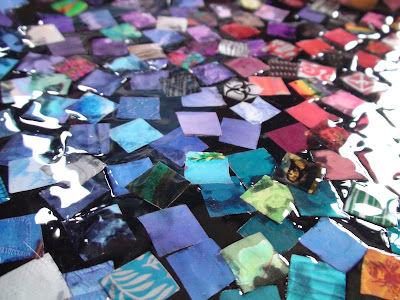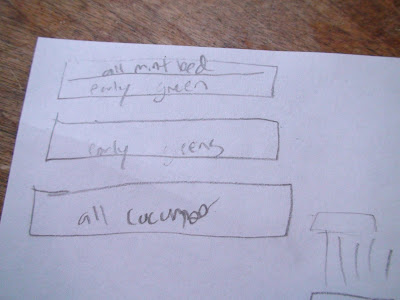Although not a necessity, I've found that nice trays are important for cookie presentation. After I've spent hours slaving over cookies it seems like a crime to throw them into an old take out container. (Yes we save the nice plastic ones for leftovers. But don't worry we don't microwave in them.)

When I unearthed this one from my parents collection I was devastated by it's state of neglect. I love paisley! Turns out they used it as a tray to keep the cats' water and food dishes on for a long time. Stupid cats.

The only logical thing was to rehab it. I had read about using fabric to decoupage. Slapping a piece of fabric on it and calling it a day seemed like an easy solution. Somehow though my mom talked me out of the fabric idea and convinced me to use paper. (Not really sure, looking back, how that happened.)
Unlike some crafters I don't have a collection of wonderful vintage images to use for decoupaging. (Where the heck do you get those anyway?) Even if I knew where to get them I'd probably be too cheap to buy them. My only choice therefore was the magazines we have lying around. For whatever reason I decided I needed to cut out tiny squares of solid colors to do a mosaic like thing.
I started by cutting a template out of orange juice carton plastic. I then laid this down on whatever part of a page I wanted and used an exacto knife to cut around it. I then repeated this like 8,000 times.
In the mean time I also spray painted the tray black. I sanded it a little to make sure the paint would stick but not enough that I actually got rid of the texture from the chipped paint. I was feeling too lazy.

Now came the worst part: deciding how to arrange the squares. I literally tried at least 10 different placements, putting all the squares down and then taking them off again. I think I may have gone a little mad in the process.

When I finally decided on the configuration that irritated me the least I put them all down with Elmer's glue and then gave it a coat of Mod Podge matte finish. I was using one of those spongy brushes and the pieces were wrinkling and the edges were curling so after that initial coat dried I switched to Royal Coat high gloss spray. I like the gloss and spray much better but it built up really slowly. I ended up using the entire can and it still could use more layers.

But it's nice and shiny!

So the downsides to this project: I have no idea what I'm doing decoupaging. There are too many products and I have no idea which to use. It was expensive because I needed so much spray to get it nice and thick. Finally, that spray stuff takes forever to cure, like two weeks at least!
So overall very frustrating. Fiddley crafts just aren't for me.








































